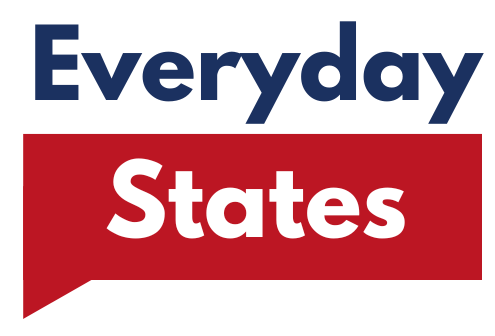The fashion industry, known for its vibrant creativity and rapid evolution, is facing an unexpected adversary: tariffs. These economic measures have cast a shadow over fashion brands across the United States, creating a landscape of uncertainty and financial strain. In this article, we explore the top 15 states where fashion brands are grappling with existential threats due to the realities of tariffs.
California: The Fashion Capital

California, often celebrated as a fashion mecca, is home to an eclectic mix of fashion brands. From the glitz of Los Angeles to the laid-back vibes of surfwear in San Diego, the state’s economy is intricately woven with the fashion industry. The imposition of tariffs has caused a ripple effect, increasing the costs of imported materials. This has inevitably led to higher retail prices, potentially alienating budget-conscious consumers. California’s diverse market demands that fashion brands swiftly adapt to evolving consumer preferences, a task made increasingly difficult by the financial pressures of tariffs.
New York: The Hub of Fashion Innovation

New York City, a global fashion epicenter, is not immune to the challenges posed by tariffs. Many designers in the city depend on materials sourced from abroad, and the increased costs from tariffs threaten their ability to create affordable collections. The fiercely competitive nature of New York’s fashion scene means that brands must constantly innovate to stay ahead. This pressure, combined with rising production costs, poses a formidable challenge for maintaining quality and creativity without compromising on affordability.
Texas: A Growing Fashion Scene

Texas, with its burgeoning fashion hubs in Austin and Dallas, has witnessed a surge in fashion brands. However, the state’s fashion industry is not insulated from the impacts of tariffs. Many Texas-based brands source materials from countries affected by tariff hikes, leading to increased production costs. This scenario threatens their competitive edge, especially against brands that can offer similar products at lower prices. The struggle to maintain affordability while facing tariff-induced financial strain is a significant hurdle for Texas fashion brands.
Florida: The Sunshine State’s Retail Challenges

Florida’s fashion industry thrives on tourism, with many brands catering to the influx of visitors. Tariffs disrupt supply chains, resulting in increased costs that are often passed on to consumers. This price hike may deter tourists from indulging in fashion purchases. Moreover, Florida’s unique climate necessitates specific materials and styles, making it imperative for brands to keep prices attractive while navigating the complexities of tariffs.
Illinois: The Midwest’s Fashion Hub

Illinois, particularly Chicago, boasts a vibrant fashion scene now threatened by tariffs. Local brands, heavily reliant on imported materials, face the daunting challenge of increased costs. This situation is especially troubling for smaller brands that lack the financial cushion to absorb these expenses. To remain competitive in a challenging market, Illinois fashion brands must explore innovative strategies to mitigate the impact of tariffs.
Massachusetts: The Rise of Sustainable Fashion

Massachusetts is at the forefront of sustainable fashion, with brands championing eco-friendly materials. Tariffs on imported goods complicate this mission, as many sustainable materials are sourced internationally. The increased costs pose a threat to the growth of these brands, making it difficult to uphold sustainability commitments while remaining profitable. The balancing act between eco-conscious practices and financial viability is a pressing concern for Massachusetts fashion brands.
Washington: The Impact on Outdoor Brands

Washington is renowned for its outdoor and activewear brands, which rely heavily on imported materials. Tariffs have a significant impact on production costs, leading to higher prices for consumers. This situation is particularly problematic for brands catering to a price-sensitive market. As consumers become more discerning about pricing, Washington’s fashion brands must adapt swiftly to preserve their market share.
New Jersey: The Challenges of Proximity

New Jersey, in close proximity to New York City, has cultivated a lively fashion scene. However, brands in the state grapple with challenges stemming from tariffs on imported goods. Increased costs often translate to higher retail prices, potentially deterring consumers. Competing with New York’s fashion powerhouses adds another layer of complexity, prompting New Jersey brands to find ways to mitigate tariff impacts effectively.
North Carolina: The Textile Industry’s Struggles

North Carolina, with its rich textile history, is now facing existential threats due to tariffs. Many local brands depend on imported materials, and the resulting cost increases hinder their ability to produce affordable products. This challenge looms large for North Carolina’s fashion industry, as brands must adapt to shifting market conditions while upholding their commitment to quality.
Georgia: The Emerging Fashion Scene

Georgia’s fashion industry, particularly in Atlanta, is on an upward trajectory. However, the state’s brands are not shielded from the effects of tariffs. Increased costs on imported materials lead to higher retail prices, making it difficult for Georgia-based brands to compete with established players. As the industry continues to grow, finding ways to navigate tariff challenges is crucial for the success of local brands.
Nevada: The Impact on Luxury Brands

Nevada, especially Las Vegas, is synonymous with luxury fashion. Yet, tariffs pose a significant threat to luxury brands heavily reliant on imported materials. Increased costs often result in higher retail prices, potentially driving consumers away. As the luxury market becomes more competitive, Nevada’s fashion brands must innovate to retain their allure while contending with tariff realities.
Pennsylvania: The Challenges of Tradition

Pennsylvania, with its rich fashion tradition, faces challenges due to tariffs on imported goods. Increased costs hinder the ability to produce affordable products, making it difficult to compete in a crowded market. As Pennsylvania’s fashion industry evolves, adapting to changing economic conditions is crucial for the success of local brands.
Ohio: The Struggles of Emerging Brands

Ohio’s fashion industry is home to numerous emerging brands now facing existential threats from tariffs. Many local designers depend on imported materials, and increased costs impede their ability to create affordable collections. As the industry continues to grow, finding ways to navigate tariff challenges is essential for the success of Ohio’s fashion brands.
Michigan: The Resurgence of Fashion

Michigan’s fashion industry is experiencing a resurgence, particularly in cities like Detroit. However, local brands face challenges due to tariffs on imported goods. Increased costs lead to higher retail prices, making it difficult for Michigan-based brands to compete with established players. As the industry continues to evolve, adapting to changing economic conditions is crucial for the success of local brands.
Colorado: The Impact on Outdoor and Activewear Brands

Colorado is known for its outdoor and activewear brands, but many face existential threats from tariffs. Increased costs on imported materials hinder their ability to produce affordable products, making it challenging to compete in a price-sensitive market. As consumers become more aware of pricing, Colorado’s fashion brands must find innovative ways to navigate tariff challenges.
The fashion industry, facing the ripple effects of tariffs, finds itself at a crossroads. From California to Colorado, brands must navigate increased costs and shifting consumer preferences to remain competitive. Finding innovative solutions to mitigate the impact of tariffs will be crucial for the success of fashion brands across the United States.







